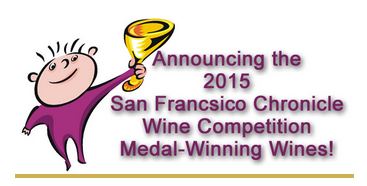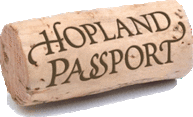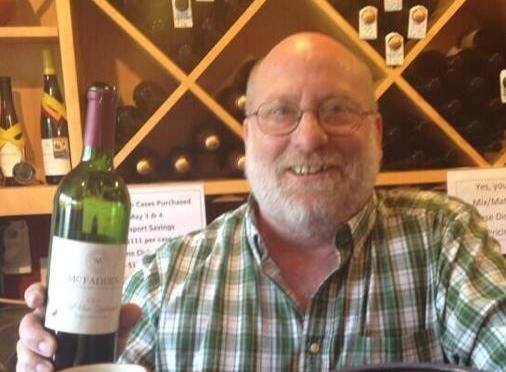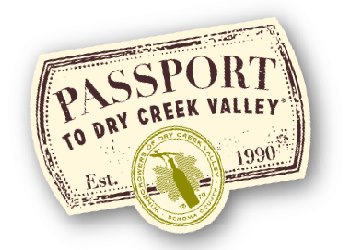For my 300th post to John on Wine, I find it fitting that I am posting a list of the medal winning wines, each proudly sporting a Mendocino County AVA on the label, recently earning honors at the 2015 San Francisco Chronicle Wine Competition, the largest judging of American wines in the world with 6,417 entries this year.
While you might be tempted to print this list and taste the top awarded, Best of Class and Double Gold, then Gold medal winning wines, there are several wines that took Bronze medals that are delicious enough that I have purchased them. What may drink like a Bronze on one day, may show Gold quality on another. Pretty much, just about every wine on this list merits a taste.
I have written for years about the quality of Mendocino County winegrapes, and the delicious wines they make. This list is filled with example after example of what I have written about, in newspaper column after newspaper column, and the additional posts that find their way online.
All of the Gold medal winning wines will be poured at the San Francisco Chronicle Wine Competition Public Tasting on Valentine’s Day, Saturday, February 14, 2015 from 1:30pm-5:00pm at the Festival Pavilion at Fort Mason Center in san Francisco. Advance tickets are $65, and available online now. Tickets at the door are $80, but will probably be unavailable…get your tickets now.
I’m posting this list while it is still news, although a version will also run in the Ukiah Daily Journal newspaper on Thursday, January 22, 2015, but may have the Bronze medal winners edited out due to space restrictions. Fortunately, online, no such restrictions exist.
Congratulations to all of the wineries, winemakers, and grape growers responsible for these excellent Mendocino County wines:
BEST OF CLASS
2013 Balo Vineyards Pinot Gris, Anderson Valley, $24.00; and
2013 Castello di Amorosa Late Harvest Gewurztraminer, Anderson Valley, $39.00.
DOUBLE GOLD MEDAL
NV McFadden Farm Sparkling Cuvee Brut Rose, Potter Valley, $32.00;
2012 Seebass Family Wines Grand Reserve Chardonnay, Mendocino, $34.00;
2013 Angeline Winery Reserve Pinot Noir, Sonoma-Mendocino, $18.00;
2013 Greenwood Ridge Vineyards Estate Pinot Noir, Mendocino Ridge, $30.00;
2012 Campovida Pinot Noir, Oppenlander Vineyard, Mendocino County, $45.00;
2012 Roadhouse Winery Platinum Label Pinot Noir, Weir Vineyard, Yorkville Highlands, $79.00;
2010 Ledson Winery & Vineyards Estate Petite Sirah, Redwood Valley, $42.00; and
2012 Navarro Vineyards Mourvedre, Mendocino, $20.00.
GOLD MEDAL
2013 Bink Wines Randle Hill Sauvignon Blanc, Yorkville Highlands, $22.00;
2013 Navarro Vineyards Chardonnay, Mendocino, $19.00;
2012 Husch Vineyards Special Reserve Chardonnay, Mendocino, $26.00;
2013 Navarro Vineyards Premiere Reserve Chardonnay, Anderson Valley, $25.00;
2013 Seebass Family Wines Family Chardonnay, Mendocino, $30.00;
2012 Artevino Chardonnay, Maple Creek Estate, Yorkville Highlands, $36.00;
2013 V. Sattui Winery Riesling, Anderson Valley, $25.00;
2013 Rivino Winery Estate Viognier, Mendocino, $25.00;
2013 Handley Cellars Pinot Gris, Anderson Valley, $20.00;
2013 Navarro Vineyards Pinot Gris, Anderson Valley, $19.50;
2011 Handley Cellars Pinot Noir, Anderson Valley, $32.00;
2013 Paul Dolan Pinot Noir, Potter Valley, Mendocino County, $30.00;
2012 Balo Vineyards Estate Pinot Noir, Anderson Valley, $45.00;
2012 Bink Wines Pinot Noir, Thomas Vineyard, Anderson Valley, $45.00;
2012 McNab Ridge Winery Zinfandel, B Var X Talmage, Mendocino County, $26.00;
2012 St. Anne’s Crossing, Zinfandel, Mendocino, $28.00;
2012 Trinitas Cellars Zinfandel, Mendocino, $28.00;
2011 Sanctuary Wines Zinfandel, Butler Ranch, Mendocino, $39.99;
2012 Graft Wines Conviction, Mendocino, $36.00;
2012 Bonterra Vineyards, Merlot, Mendocino County, $13.99;
2012 McNab Ridge Winery, Merlot, Mendocino County, $16.00;
2012 Seebass Family Wines Grand Reserve Merlot, Mendocino, $38.00;
2013 Kimmel Vineyards Cabernet Sauvignon, Potter Valley, $13.99;
2013 Lucinda & Millie Cabernet Sauvignon, Mendocino County, $14.99;
2012 Brutocao Cellars Cabernet Sauvignon, Hopland Contento Estate, $19.99;
2012 Urban Legend Cabernet Sauvignon, Gusto Vineyard, Mendocino, $34.00;
2012 Topel Estate Reserve Cabernet Sauvignon, Mendocino, $38.00;
2012 Sunce Winery & Vineyard Alicante Bouschet, Dempel Vineyard, Mendocino County, $28.00; and
2013 Husch Vineyards Old Vines Heritage, Mendocino, $30.00.
SILVER MEDAL
NV McFadden Farm Sparkling Cuvee Brut, Potter Valley, Mendocino, $40.00;
2013 Yorkville Cellars Sparkling Malbec Brut Rose, Rennie Vineyard, Yorkville Highlands, $36.00;
2013 Jaxon Keys Winery & Distillery Sauvignon Blanc, Mendocino, $18.00;
2013 McFadden Farm Sauvignon Blanc, Potter Valley, Mendocino County, $16.00;
2013 Paul Dolan, Sauvignon Blanc, Potter Valley, Mendocino County, $18.00;
2013 Campovida Reserva Campo di Stelle, Mendocino County, $36.00;
2013 Yorkville Cellars Eleanor of Aquitaine, Randle Hill Vineyard, Yorkville Highlands, $28.00;
2013 Kimmel Vineyards Illuminate Chardonnay, Potter Valley, $9.99;
2013 Girasole Vineyards Estate Grown Chardonnay, Mendocino, $13.00;
2013 Toad Hollow Francines’s Selection Unoaked Chardonnay, Mendocino, $14.99;
2013 Brutocao Cellars Chardonnay, Hopland Estate, $17.00;
2013 McFadden Farm Chardonnay, Potter Valley, Mendocino County, $16.00;
2013 Rivino Winery Estate Chardonnay, Mendocino, $22.00;
2013 Handley Cellars Estate Chardonnay, Anderson Valley, $25.00;
2013 Navarro Vineyards Estate Bottled Gewurztraminer, Anderson Valley, $19.50;
2013 Handley Cellars Riesling, Anderson Valley, $22.00;
2013 V. Sattui Winery Dancing Egg Riesling, Anderson Valley, $24.00;
2013 Bonterra Vineyards, Viognier, Mendocino County, $12.99;
2013 Campovida Campo Dos Roble Viognier, Mendocino County, $34.00;
2013 McFadden Farm Pinot Gris, Potter Valley, Mendocino County, $16.00;
2013 Philo Ridge Vineyards Pinot Gris, Nelson Ranch, Mendocino, $20.00;
2013 Campovida Rose di Grenache, Trails End Vineyard, Mendocino County, $34.00;
2012 Brutocao Cellars Estate Slow Pinot Noir, Anderson Valley, $28.00;
2012 Husch Vineyards Estate Bottled Pinot Noir, Anderson Valley, $25.00;
2013 Navarro Vineyards Methode a’l Anciene Pinot Noir, Anderson Valley, $29.00;
2010 Panthea Winery & Vineyard Siren Pinot Noir, Anderson Valley, $32.00;
2012 Calista Pinot Noir, Anderson Valley, $40.00;
2013 Castello di Amorosa Pinot Noir, Anderson Valley, $49.00;
2012 Handley Cellars Pinot Noir, Hellava Vineyard, Anderson Valley, $42.00;
2012 Handley Cellars Reserve Pinot Noir, Anderson Valley, $42.00;
2011 Husch Vineyards Knoll Pinot Noir, Anderson Valley, $40.00;
2010 Nelson Hill Pinot Noir, Deep End Vineyard, Anderson Valley, $42.00;
2010 Panthea Winery & Vineyard Estate Pinot Noir, Anderson Valley, $42.00;
2013 V. Sattui Winery Pinot Noir, Anderson Valley, $42.00;
2010 Woodenhead Pinot Noir, Wiley Vineyard, Anderson Valley, $60.00;
2013 Navarro Vineyards Zinfandel, Mendocino, $19.50;
2013 The Organic Wine Works Zenful Zin Zinfandel, Mendocino, $14.95;
2012 Paul Dolan Zinfandel, Mendocino County, $25.00;
2012 Cesar Toxqui Cellars Split Rock Zinfandel, Mendocino, $30.00;
2011 Seebass Family Wines Old Vine Zinfandel, Mendocino, $37.00;
2012 Campovida Primitivo, Dark Horse Vineyard, Mendocino County, $36.00;
2012 Wattle Creek Winery, Primitivo, Yorkville Highlands, $30.00;
2012 BARRA of Mendocino Estate Grown Sangiovese, Mendocino, $18.00;
2013 Sottomarino Winery Sangiovese, Mendocino County, $28.00;
2012 Jaxon Keys Winery & Distillery Anna Mac Syrah, Mendocino, $19.99;
2009 Bink Wines Hawks Butte Syrah, Bink Estate Vineyard, Yorkville Highlands, $30.00;
2012 Seebass Family Wines Grand Reserve Syrah, Mendocino, $38.00;
2011 Seebass Family Wines Syrah, Mendocino; $43.00;
2012 McNab Ridge Winery Petite Sirah, Mendocino County, $18.00;
2012 Jaxon Keys Winery & Distillery Jon Vincent Grenache, Mendocino, $22.00;
2013 Navarro Vineyards Grenache, Mendocino, $27.00;
2012 Greenwood Ridge Vineyards Estate Merlot, Mendocino Ridge, $27.00;
2011 Albertina Wine Cellars Cabernet Sauvignon, Zmarzly Vineyards, Mendocino, $28.00;
2010 Rivino Winery Estate Cabernet Franc, Mendocino, $36.00;
2009 Terra Savia Meritage, Sanel Valley Vineyards, $22.00;
NV Bliss Family Vineyards Estate Blissful Red, Mendocino, $9.99;
2012 Jaxon Keys Winery & Distillery Farmhouse Red, Mendocino, $14.99;
2013 Navarro Vineyards Navarrouge, Mendocino, $16.00;
2012 Post & Vine Old Vine Field Blend, Testa Vineyards, Mendocino, $28.00;
2011 Soda Rock Winery Entourage Red Blend, Mendocino County, $26.00;
2009 Bonterra Vineyards The McNabb, McNabb Ranch, Mendocino County, $49.99;
NV Cesar Toxqui Cellars Multiple Vintages Heirloom Cinco, Mendocino, $35.00;
2011 McFadden Farm Coro Mendocino Mendocino, $37.00;
2012 Topel Estate Blend, Mendocino, $38.00;
2012 Stephen & Walker , Chardonnay Botrytis, Mendocino Ridge, $65.00; and
2013 Jaxon Keys Winery & Distillery Elle Port, Mendocino, $35.00.
BRONZE MEDAL
2013 Bonterra Vineyards Sauvignon Blanc, Mendocino/Lake, $12.99;
2013 Husch Vineyards Renegade Sauvignon Blanc, Mendocino, $18.00;
2013 Navarro Vineyards, Sauvignon Blanc, Mendocino, $18.00;
2013 Bliss Family Vineyards Chardonnay, Hopland Estate, $9.99;
2013 Bonterra Vineyards Chardonnay, Mendocino County, $12.99;
2013 Naughty Boy Vineyards Chardonnay, Thorton Ranch, Potter Valley, $14.00;
2013 Parducci Wine Cellars Small Lot Blend Chardonnay, Mendocino County, $13.00;
2012 Shooting Star Chardonnay, Mendocino County, $13.00;
2013 Husch Vineyards Estate Bottled Chardonnay, Mendocino, $15.00;
2013 Husch Vineyards Vine One Chardonnay, Anderson Valley, $18.00;
2013 Seebass Family Wines, Grand Reserve Chardonnay, Mendocino, $32.00;
2013 Jim Ball Vineyards Chardonnay; Mendocino Ridge, $35.00;
2012 Bonterra Vineyards Chardonnay, Blue Herron Vineyard, Mendocino County, $49.99;
2012 La Follette Wines Chardonnay, Manchester Ridge Vineyard, Mendocino Ridge, $47.99;
2013 Castello di Amorosa Gewurztraminer, Anderson Valley, $25.00;
2013 Handley Cellars Gewurztraminer, Anderson Valley, $20.00;
2013 McFadden Farm Gewurztraminer, Potter Valley, Mendocino County, $16.00;
2013 Philo Ridge Vineyards Gewurztraminer, Ferrington Vineyard, Anderson Valley, $20.00;
2013 Greenwood Ridge Vineyards Estate Riesling, Mendocino Ridge, $18.00;
2013 McFadden Farm Riesling, Potter Valley, Mendocino County, $18.00;
2013 Route 128 Winery , Viognier, Opatz Family Vineyards, Yorkville Cellars, $19.00;
2013 Philo Ridge Vineyards Viognier, Nelson Ranch, Mendocino, $20.00;
2013 Campovida Marsanne, Bonofiglio Vineyard, Mendocino County, $32.00;
2013 Via Cellars Tocai Friulano, Fox Hill Vineyard, Mendocino County, $25.00;
2013 Seebass Family Wines Fantasi Rose of Grenache, Mendocino, $16.00;
2013 Bonterra Vineyards Pinot Noir, Mendocino County, $13.99;
2013 Navarro Vineyards Pinot Noir, Anderson Valley, $19.50;
2012 Parducci Wine Cellars Small Lot Blend Pinot Noir, Mendocino, $14.00;
2011 Naughty Boy Vineyards Organic Grown Pinot Noir, Potter Valley, $23.00;
2010 Naughty Boy Vineyards Organic Grown Pinot Noir, Potter Valley, $23.00;
2013 Jaxon Keys Winery & Distillery Pinot Noir, Anderson Valley, Mendocino, $34.00;
2012 Balo Vineyards Suitcase 828 Pinot Noir, Anderson Valley, $38.00;
2009 Harmonique The Noble One Pinot Noir, Anderson Valley, $39.00;
2009 Nelson Hill Pinot Noir, Deep End Vineyard, Anderson Valley, $36.00;
2011 Philo Ridge Vineyards, Pinot Noir, Anderson Valley, $36.00;
2012 Artevino Pinot Noir, Anderson Valley, $40.00;
2010 Panthea Winery & Vineyard Pinot Noir, Londer Vineyard, Anderson Valley, $42.00;
2011 Handley Cellars Pinot Noir, RSM Vineyard, Anderson Valley, $52.00;
2010 Philo Ridge Vineyards Pinot Noir, Marguerite Vineyard, Anderson Valley, $50.00;
2012 Bliss Family Vineyards Estate Zinfandel, Mendocino, $9.99;
2012 Bonterra Vineyards Zinfandel, Mendocino County, $13.99;
2011 Brutocao Cellars Zinfandel , Hopland Estate, $19.99;
2012 Carol Shelton Wines Old Vines Wild Thing Zinfandel, Mendocino County, $19.00;
2012 Weibel Family Vineyards & Winery Zinfandel, Mendocino County, $16.95;
2012 Jaxon Keys Winery & Distillery Mae’s Block Zinfandel, Mendocino, $24.00;
2012 Jaxon Keys Winery & Distillery Etta’s Block Zinfandel, Mendocino, $22.00;
2013 Husch Vineyards Old Vines Zinfandel, Mendocino, $25.00;
2013 Navarro Vineyards Old Vine Zinfandel, Mendocino, $27.00;
2012 Philo Ridge Vineyards Zinfandel, Firebrick Vineyard, Mendocino, $26.00;
2012 Oak Cliff Cellars Zinfandel, Firebrick Hill, Redwood Valley, $35.00;
2012 Woodenhead Zinfandel, Mariah Vineyard, Mendocino Ridge, $46.00;
2011 Brutocao Cellars Primitivo, Hopland Contento Estate, $19.99;
2013 Sottomarino Winery Primitivo, Mendocino County, $32.00;
2011 Muscardini Cellars Barbera, Pauli Ranch, Mendocino County, $38.00;
2013 Navarro Vineyards Barbera, Mendocino, $27.00;
2011 Brutocao Cellars Quadriga, Hopland Estate, $19.99;
2012 Route 128 Winery Syrah, Opatz Family Vineyard, Yorkville Highlands, $24.00;
2012 Greenwood Ridge Vineyards Estate Syrah, Mendocino Ridge, $27.00;
2013 Navarro Vineyards Syrah, Mendocino, $27.00;
2010 Simaine Cellars Syrah, Venturi Vineyards, Mendocino, $25.00;
2009 BARRA of Mendocino Estate Grown Petite Sirah, Mendocino, $22.00;
2012 Navarro Vineyards Petite Sirah, Mendocino, $27.00;
2010 Notarius Petite Sirah, Heart Arrow Ranch, Mendocino, $24.00;
2012 Parducci Wine Cellars True Grit Reserve Petite Sirah, Mendocino County, $29.00;
2012 Theopolis Vineyards Petite Sirah, Yorkville Highlands, $36.00;
2012 Graft Wines Grenache, Dark Horse Vineyard, Mendocino County, $32.00;
2012 Bliss Family Vineyards Estate Merlot $9.99;
2012 Brutocao Cellars Merlot, Hopland Bliss Estate, $19.99;
2011 Terra Savia Merlot , Sanel Valley Vineyards, Mendocino County, $15.00;
2012 Weibel Family Vineyards & Winery Merlot, Mendocino County, $16.95;
2009 Artevino Merlot, Maple Creek Estate, Yorkville Highlands, $40.00;
2013 Bliss Family Vineyards Cabernet Sauvignon, Hopland Estate, $9.99;
2012 Bonterra Vineyards Cabernet Sauvignon, Mendocino/Lake, $13.99;
2012 Husch Vineyards Cabernet Sauvignon, Mendocino, $23.00;
2010 Terra Savia Cabernet Sauvignon, Sanel Valley Vineyards, Mendocino County, $22.00;
2012 Navarro Vineyards Cabernet Sauvignon, Mendocino, $29.00;
2011 Paul Dolan Cabernet Sauvignon, Mendocino County, $25.00;
2012 Greenwood Ridge Vineyards Estate Cabernet Sauvignon, Mendocino Ridge, $35.00;
2013 The Organic Wine Works Organic A’Notre Terre, Mendocino, $14.95;
2012 Jaxon Keys Winery & Distillery Assemblage, Mendocino, $24.00;
2012 Yorkville Cellars HI-Roller Red, Mendocino, $19.00; and
2011 McFadden Farm Late Harvest Riesling, Potter Valley, Mendocino County, $18.00.























































